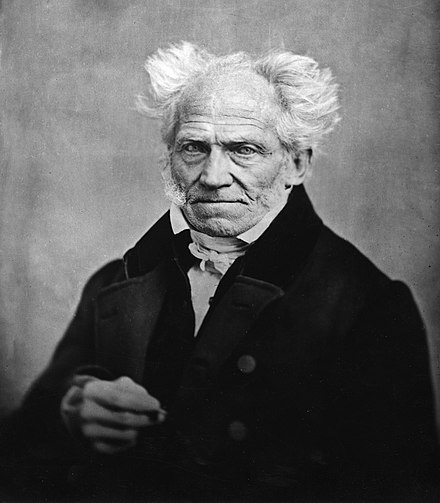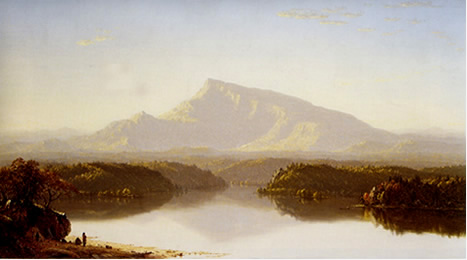142. Solitude and Education, Part 4: Schopenhauer on Contemplation and the Sublime
Friedrich Nietzsche (1844-1900), in his book Daybreak (1881), wrote:
“On Education. – I have gradually seen the light as to the most universal deficiency in our kind of cultivation and education: no one learns, no one strives after, no one teaches – the endurance of solitude.” (aphorism #443, translated by Hollingdale)
But why the endurance of solitude? So far we have considered three closely related answers: (1) solitude can help us find our authentic individuality; (2) solitude can help us understand other people and things more objectively; and (3) we should embrace solitude if we are to truly read in order to encounter greatness and expand our self (go here for these posts). Now let’s consider a very interesting fourth answer that will expand our cumulative case in defense of Nietzsche’s claim. We will see, again, that the answer tends to revolve around the notion of self-actualization.
(4) Enduring solitude can facilitate a state of disinterested contemplation which can help us overcome our cravings.
Many years before Nietzsche wrote about solitude and education, Arthur Schopenhauer (1788-1860), in vol. I of his 1819 masterpiece The World as Will and Representation (Dover Publishing, translated by E. F. J. Payne), claimed that our ability to endure solitude is a good criterion of our intellectual worth. In the course of discussing a weak impression of the sublime in section 39, Schopenhauer observes that when nature around us is silent there is a “summons to seriousness” in which, if we have the right “aesthetic susceptibility”, a form of disinterested contemplation will occur that can momentarily liberate us from the cravings of our will. Consider this remarkable passage:
“Let us transport ourselves to a very lonely region of boundless horizons, under a perfectly cloudless sky, trees and plants in the perfectly motionless air, no animals, no human beings, no moving masses of water, the profoundest silence. Such surroundings are, as it were, a summons to seriousness, to contemplation, with complete emancipation from all willing and its cravings; but it is just this that gives to such a scene of mere solitude and profound peace a touch of the sublime. For, since it affords no objects, either favourable or unfavourable, to the will that is always in need of strife and attainment, there is left only the state of pure contemplation, and whoever is incapable of this is abandoned with shameful ignominy to the emptiness of unoccupied will, to the torture and misery of boredom. To this extent it affords us a measure of our own intellectual worth, and for this generally the degree of our ability to endure solitude, or our love of it, is a good criterion. The surroundings just described, therefore, give us an instance of the sublime in a low degree, for in them with the state of pure knowing in its peace and all-sufficiency there is mingled, as a contrast, a recollection of the dependence and wretchedness of the will in need of constant activity. This is the species of the sublime for which the sight of the boundless prairies of the interior of North America is renowned.” (203-204)
Arthur Schopenhauer
Here Schopenhauer is discussing what he takes to be a weak form of what Immanuel Kant (1724-1804), in his book Critique of Judgment, referred to as the dynamic sublime. Typically this form of the sublime occurs when we make judgments about mighty things that have the capacity to hinder, resist, and destroy our physical well-being. Kant gives some examples: “Bold, overhanging, and, as it were, threatening rocks, thunderclouds piled up the vault of heaven, borne along with flashes and peals, volcanoes in all their violence of destruction, hurricanes leaving desolation in their track, the boundless ocean rising with rebellious force, the high waterfall of some mighty river, and the like, make our power of resistance of trifling moment in comparison with their might.” In such cases we experience the might of nature and, to be sure, experience displeasure in the revelation that our physical powers, even when extended by technology, are so exceedingly small. But if we are making a judgment of the sublime we also come to realize that we are free to stand up against such overpowering might. We come to see that, while our body and personal belongings are obviously dependent on the forces of nature, our personhood exists as free and independent of these forces. This awareness of our freedom allows pleasure to follow displeasure. Thus the sublime is able to edify us as free souls even as it shows us the limits of our bodies.
Returning to Schopenhauer, we can see the same tension, albeit less dramatic, between freedom and nature in his example of solitude. One can easily imagine the dangers that would accompany explorers moving through the prairies of North America. Their will to live would be fully engaged negotiating the terrain and scanning for threats. Their senses would be on full alert. But now suppose a strange silence covers the land: nothing is heard, nothing seems to move, and everything appears suspended. Such an eerie change would, for many, be unwelcome and they would take steps to break the silence. But for one who can endure solitude, the change would offer a remarkable opportunity to enter a state of pure contemplation. And the change would be an example of the dynamic sublime since we would have a contrast between, on the one hand, the landscape as a field of action with potential threats and, on the other hand, a free mind that can transcend its will to act in relation to such threats. I think such a transcendent state is visually approximated in Sanford Robinson Gifford’s painting The Wilderness (1861):
Gifford’s landscape, which is a representative example of the Hudson River school of American painters, is also an excellent example of luminism which, according to the Wikipedia entry on luminism, refers to “the American landscape painting style of the 1850s–1870s characterized by effects of light in landscapes, through using aerial perspective, and concealing visible brushstrokes. Luminist landscapes emphasize tranquility, and often depict calm, reflective water and a soft, hazy sky.” Luminist works are often taken to represent a contemplative perception of nature in which “rarified veils of light, color, and atmosphere reflected in water offer an experience of silence” which invokes “a description akin to Sublime philosophy.” We can imagine the human figure in the lower left hand corner being struck by a silence that suddenly coats the hazy, boundless expanse. The mountain takes on an uncanny glow; the water an uncanny stillness as it reflects the mountain. A quieting of the will to act occurs and the view is contemplated in solitude for its own sake rather than seen as a means to an end. If we can imagine this sublime experience happening to ourselves, or can recollect an occasion in which it did happen, perhaps we can grasp Schopenhauer’s point that the endurance or even love of solitude would be a measure of our “intellectual worth”. After all, solitude would be the condition for the possibility of disinterested contemplation which, in turn, would be the condition for being free from, rather than addicted to, the cravings of the will which lead to the “torture and misery of boredom”. Unlike solitude-fearing people who are constantly and frantically seeking diversions and pleasures, those comfortable with solitude can cultivate contemplation and therefore gain tremendous self-control through “pure knowing in its peace and all-sufficiency”.
It is interesting to see how these insights work together with our insights about solitude and education from the previous three posts. After all, how can we expect anyone to actualize their individual potentials if they are always determined to act by external forces? If they are always craving something, seeking out diversions, and shunning solitude to avoid boredom? Schopenhauer’s insights about contemplation also connect nicely to Nietzsche’s point about solitude helping us see things more objectively. For in contemplation we don’t see from our biased perspective. Rather, we are, as Schopenhauer says, “no longer individual, but pure subject of knowing” (194). Finally, Bloom’s argument that we read to encounter the sublime connects to the foregoing account of solitude and the sublime as well.
For a fifth and very romantic way to connect education and solitude, go here.
For my in-depth overview of the Kantian sublime, go here.

